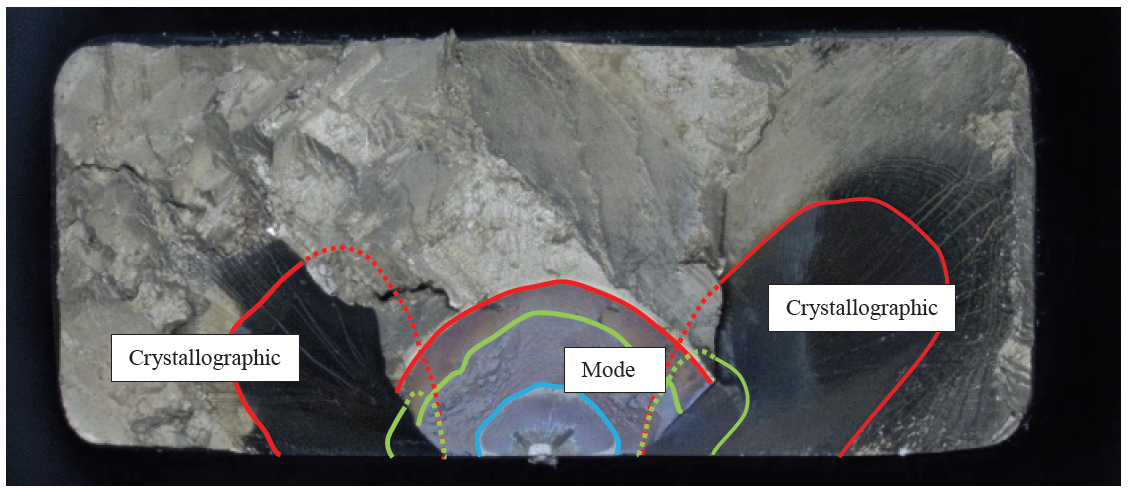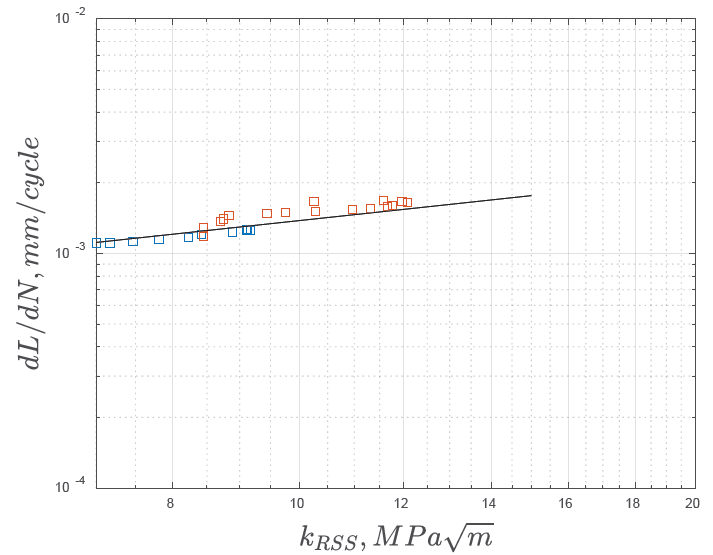解析事例-7
単結晶ニッケル合金の結晶き裂伝播速度
資料より抜粋(本Web向けに図番号を変更):
The equivalent RSIF was then calculated along the crack fronts where crystallographic cracking is present and the conventional anisotropic SIFs are calculated for the parts of Mode I cracking. This is done for the cracks corresponding to the heat tints, since the crack geometry can be approximated best. The anisotropic SIFs are calculated by the crack evaluation tool FRANC3D.The FE-solver of ABAQUS is used to calculate the displacements. The results are shown Fig. 2, where it can be seen that all data points for both crystallographic cracks fall into a narrow band. The blue squares correspond to the left and the orange squares to the right crystallographic crack front.

Fig1. Heat tints on fracture surface of specimen Kb1. Cracks instances 0, 1 and 2 are high lighted in blue, green and red, respectively.

参照:Busse,C., Palmert,F., Wawrzynek,P., Sjodin,B., Gustafsson,D. and Leidermark,D. (2019) Crystallographic crack propagation rate in single-crystal nickelbase superalloys. MATEC Web of Conferences 165, 13012 FATIGUE 2019

